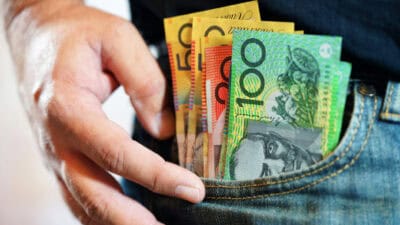Every month, it seems the dominance of the Vanguard Australian Shares Index ETF (ASX: VAS) grows on the ASX.
As it currently stands, the VAS exchange-traded fund (ETF) has $11.04 billion in funds under management. That's more than double that of its closest index fund rival.
Clearly, ASX investors find the broad-based exposure to the ASX's 300 or so largest shares that VAS provides very useful.
But the ASX is also known for its dividends. After all, most of the largest ASX shares on the ASX 300 Index pay dividends.
That makes VAS itself a dividend-paying ETF in its own right. Its total dividend distributions over the past four quarters amounted to $4.66 per share. On current pricing (helped by VAS's big fall on Tuesday), this means those $4.66 in distributions give VAS a trailing yield of 5.58%.
That's certainly not a bad yield on paper. But the ASX is also home to many ETFs that purely focus on dividend income.
So how does VAS measure up to these other ETFs when it comes to dividends? Would income investors be better off with one of those funds instead of VAS?
Well, let's check it out.
How does the VAS ETF stack up?
Vanguard itself runs a dividend-focused ETF called the Vanguard Australian Shares High Yield ETF (ASX: VHY). Instead of 300 shares, VHY only holds 63 select dividend shares in its portfolio.
This fund's last four dividend distributions came to a total of $$3.22 per unit. That gives VHY a trailing 12-month yield of 5.06% on current pricing. That yield alone doesn't match VAS.
In terms of performance, VHY has returned 9.14% over the past 12 months (to 31 May) and an average of 8.36% per annum over the past five years. That beats out VAS, which has given investors a 4.77% return over the past 12 months and an average of 8.95% per annum over the past five years.
But this is a rather strange situation where the dividend-focused ETF offers a lower distribution yield but better long-term performance – a reversal of what conventional wisdom dictates should happen.
Let's look at another income-focused ETF and see if this trend continues.
The iShares S&P/ASX Dividend Opportunites ETF (ASX: IHD) is a fund similar in nature to VHY. It only holds 48 ASX dividend shares at the moment and also pays out quarterly distributions. Its past four distributions came to 73.37 cents per unit. On IHD's current unit price of $12.77, that gives this ETF a distribution yield of 5.75%.
That comes in on top of all of the ETFs we've looked at today. But let's check out the performance figures here too.
IHD has returned 4.14% over the past 12 months (to 31 May). Over the past five years, it has averaged a return of 4.55% per annum.
Foolish takeaway
In conclusion, it seems that Vanguard's VHY dividend ETF has been a better investment than VAS or IHD both over the past year, and on average over the past five.
Saying that, investors chasing the highest yield above all else might have preferred the iShares IHD option for the raw yield one could obtain from that ETF.
It just goes to show that labels such as 'high yield' don't always deliver on what they might imply.









